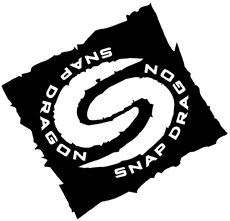Getting on the water at the Big Rock Quarry. The forecast on Sunday was 94 degrees and sunny. A perfect day to either hide inside someplace air conditioned (library, movie theater, frozen food aisle) or go outside someplace wet.We were scheduled to teach a Level 2 class for Geneva Kayak Center at the Big Rock Quarry in Sugar Grove, so outside and wet it was.We love teaching this all-day class, which is typically the second class students take after a two-hour intro class. We start with wet exits, move on to basic strokes, and end with rescues. Students who begin the day fearful of falling over generally end the day feeling more in control of their boats and more aware of what they still need to work on and learn. They know enough to know that they know enough to be dangerous, which is a pretty safe place to...
Leadership and Rescues class
Practicing T-rescues in the Chester River. On Sunday, we taught a class called Leadership and Rescues. This five-hour workshop was designed to cover the essential assisted and self rescues, including variations appropriate for specific conditions, as well as basic towing techniques. But we also wanted to help students explore each paddler’s role in avoiding an incident, and how we can prevent things from spinning out of control.Most of the time, we try to get our classes on the water as quickly as possible. After all, students sign up for a kayaking class because they want to paddle, not because they want to stand on the shore listening to us talk about paddling. But in this case, we deliberately spent the first 45 minutes on land, going over some of the basic leadership concepts we’ve learned and the safety and communication issues of which anyone paddling in a group should be aware.We promised our students that we’d post a synopsis of what we covered during that class—a virtual handout—so this blog entry will do double duty, sharing that material with them as well as with anyone else who’s interested in it.We bagan with two BCU acronyms we find especially helpful: CLAP and SAFE.CLAP stands for Communication, Line of sight, Avoidance is better than a cure, and Position of maximum effectiveness. These are considerations group leaders must address before and during and after any paddle. Communication is a huge category that includes everything from whether or not the plan and expectations are clear and agreed upon, to how the group will communicate on the water. Line of sight refers to the need to the leader to keep all members of the group in view at all times. Avoidance is better than a cure is a British way of saying that an ounce of prevention is worth a pound of cure. And Position of maximum effectiveness refers to the need for the leader to be where he or she can best control and direct the group.SAFE stands for Stop, Assess, Formulate, Execute. This helps avoid rash reactions to situations by reminding us to size up the situation and think through our options before acting.(We have to thank Jeff Allen for introducing these concepts to us. For more in-depth explanations, see the BCU coaching handbook.)After that, we talked about other essential pre-trip checklist items:– Appropriate “kit” for the conditions, which should include food and water, first-aid for yourself and your boat, spare clothing, and communication, safety and signaling equipment.– A medical talk (and how to help others feel comfortable talking about issues that you ought to know about).– Filing a float plan (and with whom).On the water, we practiced the basic T-rescue and...
The power of symposia
Between Memorial Day and Labor Day, the midwest supports eight kayak symposia, from the old (Great Lakes Sea Kayak Symposium) to the new (Windy City Symposium), from the family-oriented (West Michigan Coastal Kayakers Association) to the all-female (Ladies of the Lake). Some are traditional (Greenland Symposium and QUJAQ Training Camp). Most are “bicultural” (Door County Sea Kayak Symposium, Inland Sea Symposium). But all have some key attractions in common: They offer an opportunity for students to take a wide range of classes from numerous instructors in a concentrated period of time; they enable vendors to demonstrate and explain their gear to potential buyers, and potential buyers to test paddle a variety of kayaks; they provide beginner and intermediate paddlers with access to top-notch coaches from around the country and the world; they feature presentations by world-class kayakers who’ve completed expeditions the rest of us can only dream about; and they enable a gypsy group of local kayak instructors to reconnect several times during the summer months. The rodeo at the Western Michigan Coastal Kayakers Symposium, where students and instructors apply their paddling skills to absurd challenges. Many symposia include trips. Here, students and instructors paddle through the Apostle Island sea caves during the Inland Sea Kayak Symposium. Doug Van Doren checks out a waterfall along Pictured Rocks National Lakeshore during the Great Lakes Sea Kayak Symposium. Most of us who teach at these symposia do so as volunteers. We provide all our own gear, pay for our own transportation, and donate our time. Students are sometimes baffled by this generosity.In fact, it’s really not so hard to understand what motivates us: a desire to offer newer kayakers what was once offered to us, a dedication to sharing our enthusiasm and knowledge about a sport we love, and the pleasure of hanging out with other people who feel the same way.In the five short years that we’ve been paddling, we’ve grown very fond of our fellow midwestern instructors. We are a family of sorts, full of larger-than-life characters, crazy stories, mischief and compassion. We strip in parking lots, debate the stink-resistance of various types of clothing, eat one another’s food and watch out for one another. If that’s not family, what is?Students pick up on this camaraderie. We still recall our first symposium, where we were impressed by how much fun our instructors were having and how much they enjoyed one another’s company. Thanks in part to them, we became skilled enough to offer the same inspiration and instruction to the next cohort of paddlers.Symposia aren’t a substitute for taking full classes at a reputable kayak center. They’re more like a tasting menu, while full-length classes are a multi-course meal....
taking risks, earning rewards
Robert, Kerrie and Noah Schrack. We’ve been meaning to write a little bit about our hosts, Robert and Kerrie Schrack. It’s a daunting task because they’ve been so generous and impressive on so many fronts. So this post will attempt to address what’s been missing from previous posts: some sense of who brought us here. Robert and Kerrie are the owners of Adventure Crafters in Queenstown, MD. They have a small but impressively stocked pro shop and offer classes and trips. Check out their website at www.adventurecrafters.com. Robert and Alec met during their Instructor Certification Exam at Sea Kayak Georgia, one of the premiere places for sea kayak training. They’re both natural athletes and generous spirits, so they hit it off immediately. Adventure Crafters is in its second year here in Queenstown, after a year and a half or so in Westchester, PA. Robert traded in his landscaping business to invest full-time in kayaking, with Kerrie assisting him in everything from running the shop to leading the evening paddles. It’s an impressive balancing act: work and family, time on water and time running the business, making a living and being true to their values. They’re walking all those tightropes admirably. We’ve been staying with them for almost a week now, sharing meals, teaching classes, messing around on the water, hanging out and sharing stories. We’ve met an assortment of the students they attract, who seem to share the down-to-earth, honest spirit that Robert and Kerrie bring to their business. It’s been a great pleasure to see this small, family business in its early stages and help for one short week. One of the hazards of teaching and guiding full-time is that you rarely get to go out and paddle for fun, and when you do, you usually do so alone. This evening, we paddled out with Robert into a pretty stiff head wind until the darkening clouds grew a little too ominous. We surfed back home to the sounds of thunder, looking over our shoulders at some very dramatic skies. As we approached Eastern Neck Island, we saw sheets of raining pouring down from the clouds ahead of us. Almost back in safe harbor, the waves subsided and we knew we had outpaddled the storm. It seemed an apt metaphor for what makes anything in life meaningful. Often you have to take a risk to gain a reward. Whether it’s a stunning sky, an exciting ride or a meaningful life, you have to take some chances. We’re awfully glad that Robert and Kerrie took a chance on Adventure Crafters and included us in their...
Why a women’s class?
Most classes begin with individual boat fit so that students feel comfortable in their kayaks and can control them well. Saturday’s “women on the water” class was, in many ways, typical of other all-female classes I’ve taken and taught. The participants ranged from timid to almost fearless, from novice to intermediate, from goal-oriented to open-to-anything. But what they all had in common was this: They wanted to learn in a supportive environment where nobody would judge them, and that’s what an all-women’s class meant to them.It’s funny, when you think about. Are women any less judgmental than men? Not necessarily. But they often are more supportive of one another, particularly when they are overcoming their fears and gaining new skills. In a mixed gender class, you’re less likely to see a spontaneous round of applause after someone screws up her confidence and finally attempts a scoop rescue on a fellow paddler. You’re more likely to see a someone hanging back and watching instead of trying new skills. But in a women-only class, there’s a lot of encouragement and positive reinforcement. Students root for each other and celebrate each other’s accomplishments. It’s a case of gender camaraderie at its best.Our Saturday class began with two students refusing to do a “wet exit.” One saw no need; the other was afraid. Sizing up the conditions (warm water and air, calm seas, no spray skirts), I hastily devised the “modified wet exit,” in which I would hold the student’s hands while she flipped her boat and came out. Both students agreed to do this and executed it easily, proving to themselves and to me that they would come out of their boats if they accidentally capsized.By contrast, one student came to class with the wet exit high on her list of desired skills. She had never done one and was a little afraid she wouldn’t be able to. After she pulled one off, she was ecstatic, and kept doing it over and over just to reinforce the skill. Her pride was infectious; the excitement of the whole class ratcheted up several notches.The rest of the class entailed a mix of teaching and playing, with the games reinforcing the skills. For example, after teaching turning strokes and draw strokes, we played kayak basketball, in which students attempted to toss tennis balls into each other’s cockpits. When they missed their targets, they had to retrieve the balls from the water by using the strokes they had learned. The beauty of doing this through games is that the stroke practice happens naturally. The students laugh and focus on what they’re trying to accomplish. The paddle skills are no longer an end, but a means to...







